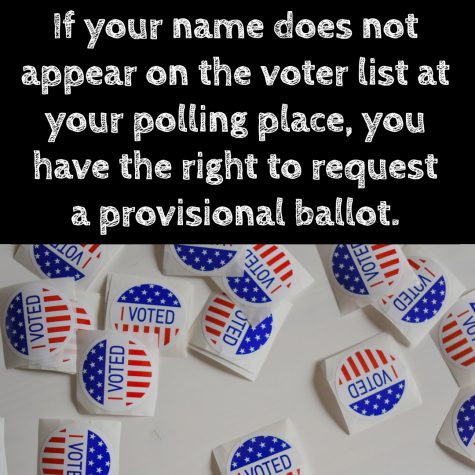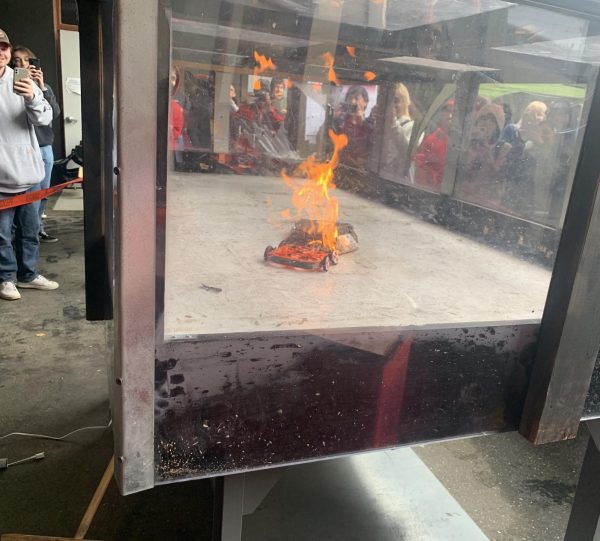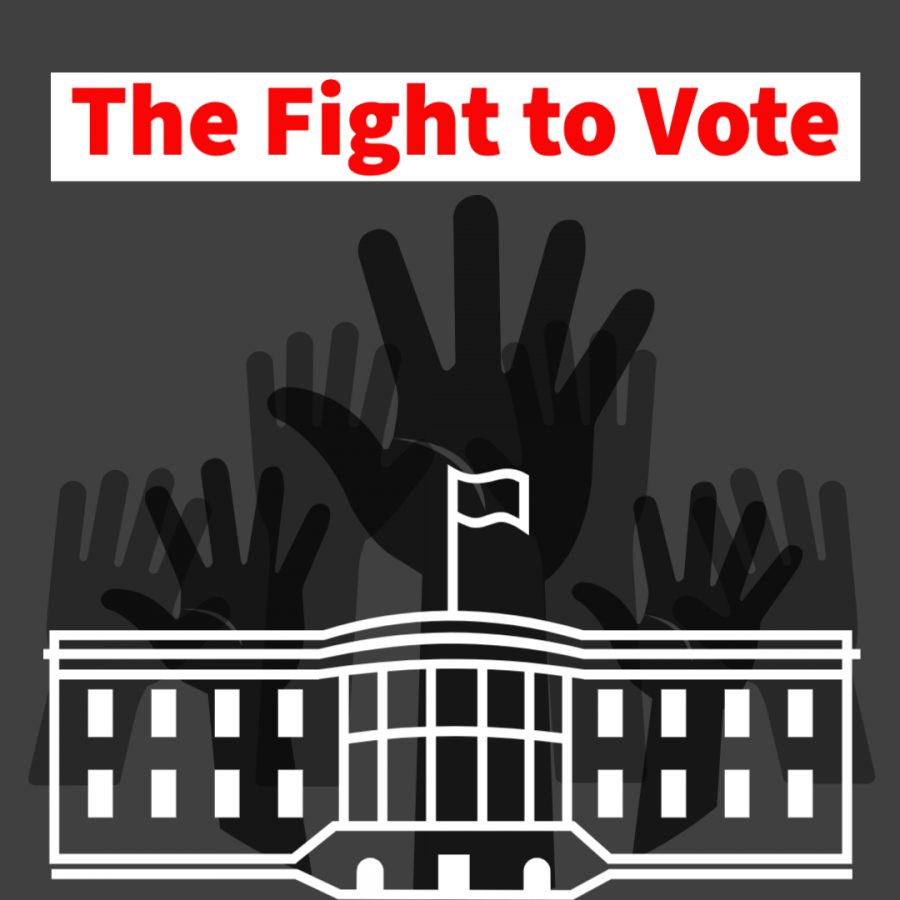Is automatic registration the solution to voter suppression?
Graphic made by Erin Holve
Last week I wrote about the complications I faced just to register to vote California, a state with liberal voting rights laws. This got me wondering, “How often does voter suppression happen and how can we combat it?” Voter registration is supposed to exist to verify a person’s eligibility to vote in an election. But why aren’t we just automatically registered to vote?
According to USA.gov, in the U.S., you are eligible to vote in federal elections if all of the following apply: You are a citizen (either natural born or naturalized); you meet the residency requirements of your state; and you are 18 years old on or before Election Day.
At the outset this sounds fair and justifiable. We want to be able to verify who is voting in our elections, but what becomes difficult is that the rules and regulations surrounding voter registration change from state-to-state. The ACLU provides a map that shows which states impose more restrictive identification laws. Currently Texas, Mississippi, Alabama, Tennessee, Kansas, Missouri and South Carolina are a handful of the states that have harsh voter ID laws.
The ACLU states that over 21 million U.S. citizens do not have government-issued photo identification. This is because ID cards are not always accessible due to cost, time and accessibility. This often affects lower-income communities, the elderly, those living in rural areas and those with disabilities.
My difficulty in registering to vote was high, and I’m a generic-named, single, cisgendered, able-bodied white woman. If anyone should have a relatively easy time registering to vote, then it should be me. Yet I ran into several roadblocks in a state with relaxed voter ID laws.
Why don’t we have the government do more of the leg work for us like many European countries? A Vice article examines how several other first-world countries deal with voter registration.
Several countries use an automatic system that maintains a permanent voter rolls list that is constantly updated if someone moves, dies or other change occurs. Several of these countries use a register number used for tax lists, voter lists memberships in their universal health care system, official records of residence and other purposes.
The International Institute for Democracy and Electoral Assistance (International IDEA) is an intergovernmental organization that supports sustainable democracy worldwide. They have charted the connection between voter registration and voter turnout in countries across the globe. The American turnout has progressively decreased and continues to underformer compared to many other countries.
If people were automatically registered at birth, then many more eligible voters would gain access to the polls.
An article by The American Bar Association discusses the issues surrounding voter registration and how changing it could affect how many people vote.
The article cites data from the Census Bureau showing a multitude of reasons why people don’t vote. Many people have a lack of access due to illness or disability; others say they’re too busy or have conflicting schedules and registration problems.
A recent study by Demos found 51 million eligible voters in the U.S. — or one in four eligible voters — are not registered to vote because of the bureaucratic and disenfranchising nature of the registration process.
The ACLU states that voter suppression efforts can range from voter ID laws and cuts to early voting, to mass purges of voter rolls, to systematic disenfranchisement. Legislators have often redraw district lines — gerrymandering — to suppress the impact of a citizen’s vote. Suppression and gerrymandering often target people of color, students, the elderly and people with disabilities.

Voter fraud is often used to justify the use of suppression tactics. Unfounded claims of mass voter fraud are used to scare people from fighting against these restrictions. A 20-year voter fraud study conducted by MIT University found in April 2020 that the level of fraud was exceedingly rare because it occurs at the rate of 0.00006 percent — “about five times less likely than getting hit by lightning in the U.S..”
States often need to clean up voter rolls due to people moving, dying or becoming ineligible to vote. Most of the time this is a fair and good process, but it can be a backdoor to mass disenfranchisement. As stated by the ACLU, a single purge can stop thousands of people from voting. Many don’t find out they’ve been purged until election day. Almost 16 million voters were purged from the rolls between 2014 and 2016 in a recent Brennan Center study.
An automatic system increases the number of people who are registered to vote, but it’s not the only immense benefit. These systems allow for more accuracy on voter rolls by creating a continuous stream of updates and reducing the odds of mistakes that processing paper often creates. This process also saves money for the state by cutting the cost of printing, mailing and data entry that is required through the older system.
A Mother Jones article discussing why every state doesn’t have automatic voter registration highlights how many votes get lost when we require citizens of each state to register. Before California switched to this system it is estimated that 6.6 million of its citizens were eligible but not registered to vote. The counter argument to this system is often that the voter rolls will be flooded with people who aren’t eligible to vote or people who don’t want to be registered to vote.
I would argue that just because you’re registered does not mean you have to vote. American’s can exercise the right to vote or not vote as long as they are given the opportunity. The problem is that many people who want their voices heard and their ballots cast are not given the chance due to an outdated registration system and voter suppression.
One of the biggest reasons for switching to an automatic voter registration system is to hopefully increase turnout in elections. The Pew Research Center has found that the U.S. has among the lowest voter turnout rates of developed countries. Of course a portion of these low turnout rates can be caused by voter suppression.
Opposition by Republicans may be higher than Democrats because data collected and analyzed by the Washington Post found that many of the eligible but non-registered citizens tend to vote Democratic.
I’m an American citizen. Why am I struggling to prove who I am to vote in my own country’s elections that determine my social, political and economic future? The right to vote is the most fundamental constitutional right because democracy cannot exist without the electoral participation of citizens. Our democracy works best when all eligible voters can participate and have their voices heard.
Erin Holve can be reached at [email protected] and @Erin_Holve on Twitter.


















